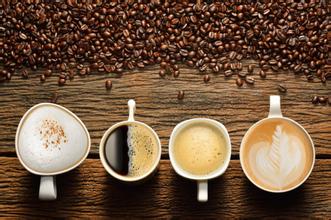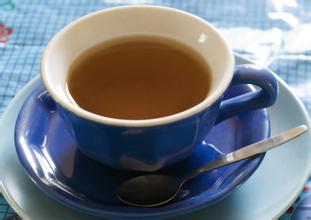Panama Emerald Manor Flavor Description Processing Variety Features Grinding Scale Introduction
Panamanian Jadeite Manor Flavor description treatment Variety characteristics Grinding scale introduction
In the land of Pokuit, there is a bean with a high performance-to-price ratio. And it has a very beautiful name-Flower Butterfly. She has 40% high-quality Rosa pedigree, which is composed of Rosa, Kaddura and Kaduai. It is planted in the Baru volcano region of Pokut and grows in the volcanic area at an altitude of 1600 meters. The treatment plant uses fine washing treatment. Panama's special local microclimate leads to abundant rainfall in this area, and a large temperature difference between day and night, coupled with the unique volcanic rock and soil of the volcanic area, as well as meticulous harvesting and fine treatment. Make this coffee excellent in terms of thickness, acidity and floral fragrance. On the basis of excellent quality, the price of this coffee bean is very close to the people. What is special about this coffee bean is that it is made up of three varieties, of which 40% are rosy summer varieties, giving this coffee a distinct rosy summer flavor. According to the information obtained, due to the historical reasons of the manor, in order to pursue yield at that time, the early Rosa varieties were mixed with the coffee trees of Kaddura and Kaduai, and in order to facilitate picking, coffee farmers did not reclassify them, but directly mixed the three varieties. After that, as Rosa rose to fame and the price was soaring, the processing plant began to carry out fine washing treatment for such a coffee bean. Now there are many ways of washing, but generally speaking, the floating beans are removed after the coffee fruit is picked, then the pulp is removed, and the coffee beans are soaked in a fermentation tank, and the enzymes in the water soften the mucus attached to the peel of the coffee beans. Natural yeast breaks down sugars in mucus, a process called fermentation. After the fermentation is completed, the coffee beans are moved to the sun field to dry. In the process of drying, the coffee beans need to be turned constantly to ensure the uniformity of drying.
There are three ways of plantation: sunshine plantation, full shade plantation and semi-shade plantation. Plantations with more than 50 plants per hectare are fully shaded plantations, 25-50 plants are semi-shaded plantations, and less than 25 plants are called sunshine plantations. What is the effect of shading and shading on coffee in the plantations of the two neighbors with the same planting conditions? Shading plantations can slow down the ripening time of coffee fruits, so there are more flavor substances in coffee cherries, so shading itself increases the cost and reduces production, and its coffee flavor is higher than that of semi-shaded plantations under the same planting conditions. now most plantations in Colombia are associated with coffee trees and bananas because Arabica trees are becoming more and more dwarfed. So when the banana tree rises, it acts as a shade.

Important Notice :
前街咖啡 FrontStreet Coffee has moved to new addredd:
FrontStreet Coffee Address: 315,Donghua East Road,GuangZhou
Tel:020 38364473
- Prev

Introduction to the Grinding scale of Coffee Flavor description method for Panamanian Hartman Honey
In fact, Panamanian coffee has not been given due recognition and attention in the boutique coffee market. Good Panamanian coffee has always been used by unscrupulous businessmen to imitate Hawaiian kona coffee and even Jamaican Blue Mountain coffee. Panamanian coffee generally belongs to the low and medium price, but in the cup.
- Next

Introduction to the production area of Ugandan Coffee Flavor Grinding Calibration by Taste treatment method
Uganda coffee flavor grinding scale varieties taste treatment grinding scale production area is located between the east and west branches of the East African Rift Valley, gently tilting from west to middle, low and flat in the south. Margarita peak is 5109 meters above sea level, which is the highest in the country. There are many rivers and lakes and a large water area, so Uganda is known as a plateau water village and a pearl in East Africa. Lake Victoria is the second largest freshwater lake in the world and Africa.
Related
- Detailed explanation of Jadeite planting Land in Panamanian Jadeite Manor introduction to the grading system of Jadeite competitive bidding, Red bid, Green bid and Rose Summer
- Story of Coffee planting in Brenka region of Costa Rica Stonehenge Manor anaerobic heavy honey treatment of flavor mouth
- What's on the barrel of Blue Mountain Coffee beans?
- Can American coffee also pull flowers? How to use hot American style to pull out a good-looking pattern?
- Can you make a cold extract with coffee beans? What is the right proportion for cold-extracted coffee formula?
- Indonesian PWN Gold Mandrine Coffee Origin Features Flavor How to Chong? Mandolin coffee is American.
- A brief introduction to the flavor characteristics of Brazilian yellow bourbon coffee beans
- What is the effect of different water quality on the flavor of cold-extracted coffee? What kind of water is best for brewing coffee?
- Why do you think of Rose Summer whenever you mention Panamanian coffee?
- Introduction to the characteristics of authentic blue mountain coffee bean producing areas? What is the CIB Coffee Authority in Jamaica?

